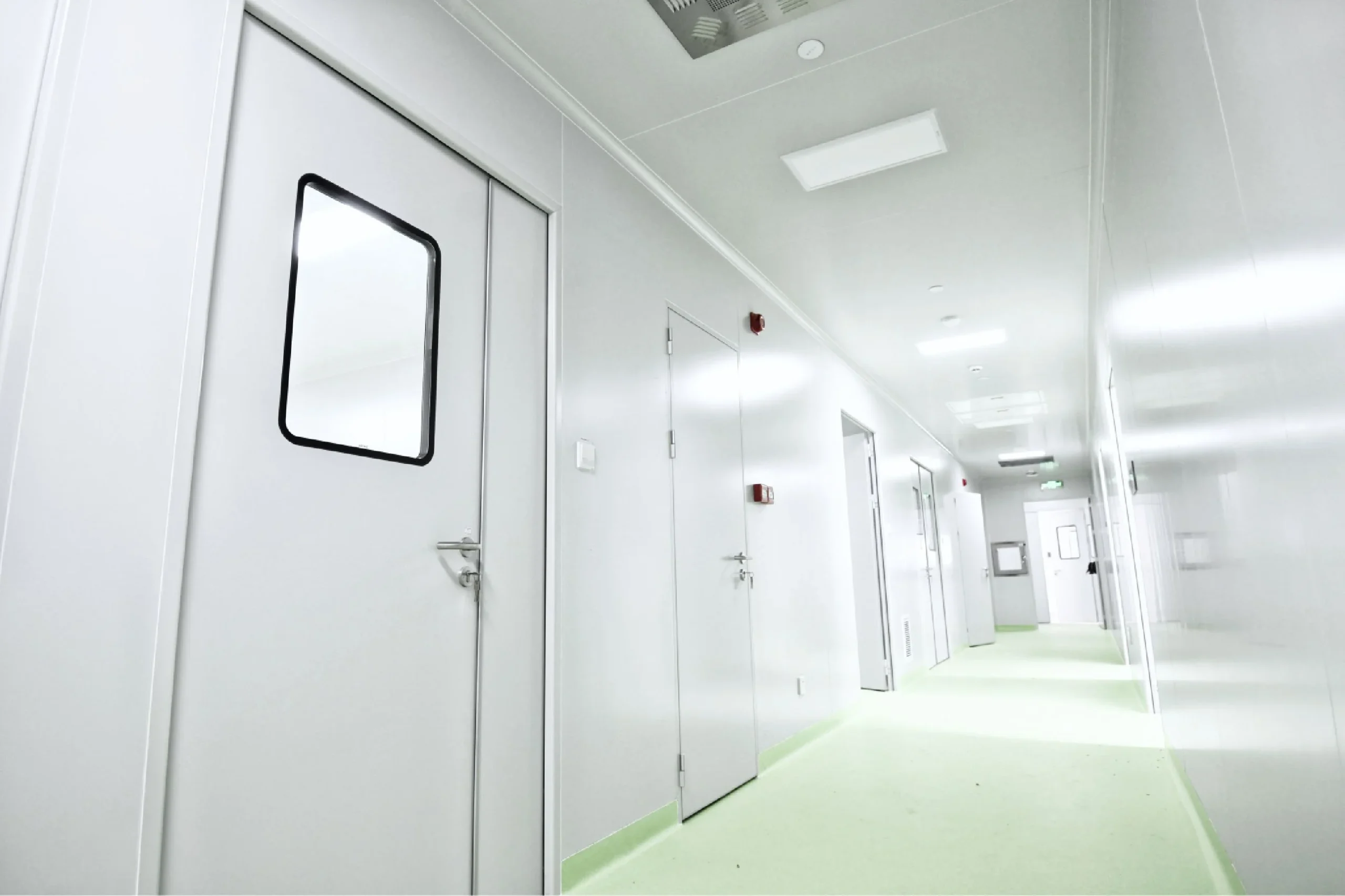How Ultra Clean Rooms Achieve Maximum Contamination Control
Time : June 06, 2025 View : 1815
Ultra clean rooms are unique spaces made to block tiny bits of dust, germs, and harmful gases. These areas are super important for jobs in medicine, tech, and space work. They follow tough rules, like ISO levels (ISO 1-9), and use strong HEPA/ULPA filters, regular checks, and clever machines to stay spotless. They have smooth walls that are easy to wipe down, bendable or special designs, and strict worker rules. New gadgets like AI, IoT, and power-saving air systems improve cleanliness. Green habits are guiding the future. Companies like LAIRUN make great filters and adaptable designs to match world standards.

What Defines Ultra Clean Rooms?
What Are Ultra Clean Rooms and Their Key Features?
Ultra clean rooms are tightly controlled places built to stop dust, germs, and chemical fumes. These areas matter a lot where even small dirt can wreck products or cause trouble. They keep temperature, wetness, and air pressure steady. Tough filters make sure the air stays clean. These rooms use new tools to meet or beat global cleanliness rules. They are built to keep everything pure, so products stay safe and work right.
How Are Clean Rooms Classified and Standardized?
Clean rooms are sorted by how much dust is in the air, using ISO 14644-1 rules. The groups go from ISO 1, the cleanest, to ISO 9, the least clean. For example, an ISO 1 ultra clean room allows just 10 tiny particles per cubic meter, each 0.1 microns or bigger. These tight rules make clean rooms good for tasks like building microchips or mixing medicines. They ensure the air is pure enough for sensitive work.

Why Are Ultra Clean Rooms Essential Across Industries?
Ultra clean rooms are key in areas like medicine, tech, space, and food making. In medicine, they stop germs from spoiling drugs. In tech, they shield small parts like microchips from dust. In food plants, they keep products safe for people to eat. These rooms help companies meet high safety and quality goals. They make sure products are clean and reliable.
What Components Ensure Effective Contamination Control?
How Do Air Filtration Systems Function in Ultra Clean Rooms?
Air filtration systems are the core of ultra clean rooms. HEPA filters and ULPA filters grab tiny bits as small as 0.3 microns with 99.999% success. These filters keep the air free of dirt. They pair with smart airflow plans to make rooms cleaner. LAIRUN builds top filtration systems for all kinds of jobs. Their products work smoothly in ultra clean room setups, giving great results and following world rules.
How Is Environmental Monitoring Conducted?
Checking the environment means watching dust and germ levels all the time. Tools like laser particle counters measure air quality exactly. This ongoing checking keeps the room clean. If something’s wrong, workers can fix it fast. LAIRUN makes high-tech monitoring tools with smart sensors and data trackers. These give full control over the room’s cleanliness.
What Factors Influence the Design and Construction of Ultra Clean Rooms?
Which Materials Prevent Contamination During Construction?
Picking the right materials is super important to keep dirt out. Smooth, non-porous surfaces that block germs and are easy to clean are the best choice. Materials like stainless steel or special coatings are used for walls, ceilings, and floors. These help keep ultra clean rooms super tidy and safe for delicate work.
Should You Opt for Modular or Custom-Built Designs?
Choosing between modular and custom-built designs depends on what the project needs:
- Modular designsare bendable and fast to put up. They cost less than custom ones. LAIRUN’s modular ultra clean room solutions use exact panels that join perfectly. These follow strict cleanliness rules and are easy to change when needed.
- Custom-built designsare made for special needs. They take more time to build but fit unique tasks. Both types have good points, but modular designs are often quicker and cheaper.
Operational Practices for Maintaining Maximum Contamination Control
What Are the Best Cleaning Protocols and Equipment?
Keeping ultra clean rooms dirt-free needs strict cleaning rules and special gear. Cleaning products must leave no mess and be safe for the room’s surfaces. This stops bad reactions or damage. Machines like robotic scrubbers clean thoroughly every time. Regular cleaning with tools like microfiber mops and HEPA-filtered vacuums cuts down dust and germs. These steps keep the room safe for important tasks.
How Should Personnel Behave, and What Training Is Required?
Workers’ actions really matter for keeping things clean. They must wear special clothes made from non-shedding materials. These stop particles from spreading. Workers should move slowly to avoid kicking up dust. Training shows them how to spot contamination risks, handle materials safely, and act in emergencies. Regular checks make sure workers stick to the rules. This creates a team that keeps the ultra clean room pure.
The Role of Technology in Enhancing Contamination Control
How Does Automation Transform Clean Room Operations?
Automation makes ultra clean rooms better by cutting errors and boosting accuracy. Machines handle air pressure, temperature, and wetness on their own. They also make sure filters work right. Robotic arms move materials to avoid human touch on sensitive items. For example, automated lines in cleanroom sandwich panel factories give steady results and high output. These tools raise efficiency and meet tough world standards.
Why Are Advanced HVAC Systems Crucial for Controlled Environments?
HVAC systems are super important for keeping ultra clean rooms pure. They manage airflow and catch tiny dust bits. HEPA filters in these systems grab even the smallest particles. Power-saving HVAC designs cut costs while keeping rooms clean. Top companies make systems with strong insulation and fire safety. These fit different industries, balancing green goals with strict rules.
Future Trends in Ultra Clean Room Development
How Will AI and IoT Shape Contamination Management?
AI and IoT are changing how ultra clean rooms stay clean. AI reads data from IoT sensors to find risks before they grow. Smart systems tweak air, temperature, or filters right away if something’s off. This keeps rooms clean without waiting. These tools make contamination control smarter and more dependable.
What Role Do Sustainable Practices Play in Clean Room Design?
Green habits are becoming a big deal in ultra clean room design. Eco-friendly materials reduce harm to the planet. Power-saving systems lower costs and waste. Modular designs let changes happen without tossing out materials. These steps match global green goals and attract companies that care about the environment.
FAQs
Q1: Why is personnel training critical in ultra clean rooms?
Training helps workers spot contamination dangers. It makes sure they follow rules to keep dust and germs out.
Q2: What makes modular clean room designs advantageous?
Modular designs are easy to adjust, quick to build, and make less waste than regular setups.
Q3: Can AI-driven systems adapt to specific industry needs?
Yes, AI can be shaped to fit different industries. It ensures perfect contamination control for special tasks.






